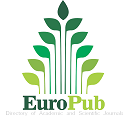Changing Borders and Women as the Narrator: The Case of Syrian Circassians
Abstract
Since 2011, with the Syrian conflict, a sizeable portion of the Syrian Circassian diaspora have fled to Turkey. The experience of deportation due to the Syrian civil war exposed the community to the same trauma for the third time. However, as the refugees were forced to leave their country, they experienced different conditions than their Arab and Kurdish counterparts. Utilizing solidarity networks through their kinship relations, the Circassian diaspora appears to have avoided the hardships encountered by other refugee groups at least to some an extent. In the meantime, the diaspora developed new survival strategies in the face of general negative attitudes towards refugees and Syrians. The recent diasporic experience has been generally discussed with regards to issues of social class, ethnic affiliation, and distinction. Yet, the gendered dimension of the recent forced migration has been underestimated or neglected. This study aims to understand whether the women within the Circassian community who migrated from Syria to Turkey generated new forms of roles to meet the social demands of the new diasporic experience. The evidence discussed here is based on fieldwork that was conducted in 2019. One of the significant findings to be assessed in this study is the reinforcement of the patriarchy within the diaspora and the factors that facilitated this process.
Metrics
References
Akdeniz-Göker, E. (2019). Exile within Exile: Syrian Circassians Journey into Turkey, Reflections on International Relations, Politics, History and Law Nesrin Kenar ve Philip Osama Amour (Eds.), IJOPEC, (ISBN: 978-1-912503-89-6, Publication No: 2019/26)
Avangyan, A. (2004). Osmanlı İmparatorluğu ve Kemalist Türkiye’nin Devlet-İktidar Sisteminde Çerkesler. İstanbul: Belge Yayınları.
Besleney, Z. A. (2014). The Circassian Diaspora in Turkey: A Political History. London, UK: Routledge. DOI: https://doi.org/10.4324/9781315849492
Cohen, R. (1996). Diasporas and the Nation-State: From Victims to Challengers, International Affairs, 72 (13), 507-520. DOI: https://doi.org/10.2307/2625554
Dedeoğlu, S. (2011). Türkiye’de Göçmenlerin Sosyal Dışlanması: İstanbul Hazır-Giyim Sanayinde Çalışan Azerbaycanlı Göçmen Kadınlar Örneği, Ankara Üniversitesi SBF Dergisi, 66(01), 27-48. https://doi.org/10.1501/SBFder_0000002193 DOI: https://doi.org/10.1501/SBFder_0000002193
Doğan, S. (2009). Formations of Diaspora Nationalism: The Case of Circassians in Turkey. Unpublished Ph.D. thesis, Department of Political Science, Sabancı University, İstanbul.
Dündar, F. (1999). Türkiye Nüfus Sayımlarında Azınlıklar, İstanbul: Doz Yayınları. Kaya, A. (2005). Cultural reification in Circassian diaspora: stereotypes, prejudices, and ethnic relations, Journal of Ethnic and Migration Studies, 31(1), 129-149.
Gökbayrak, Ş. (2009). Refah Devletinin Dönüşümü ve Bakım Hizmetlerinin Görünmez Emekçileri Göçmen Kadınlar, Çalışma ve Toplum, 2(21), 55-82.
Jaimoukha, A. (2001). The Circassians: A Handbook. Palgrave.
Kaya, A. (2005). Cultural reification in Circassian diaspora: stereotypes, prejudices, and ethnic relations, Journal of Ethnic and Migration Studies, 31(1), 129-149. DOI: https://doi.org/10.1080/1369183042000305717
Kaya, A. (2014). The Circassia Diaspora in and Outside Turkey: Construction of Transnational Space in the Post-Communist Era, Problems of Post-Communism, 61/4, 50-65. DOI: https://doi.org/10.2753/PPC1075-8216610404
Kaya, A. (2004). Political Participation Strategies of the Circassian Diaspora in Turkey, Mediterranean Politics, 9:2, 221-239. DOI: https://doi.org/10.1080/1362939042000221286
Karpat, K. (1985). Ottoman Population: Demographic and Social Characteristics. Madison: The University of Wisconsin Press, 1985.
Mark J. M & Stephen Castels (2008). Göçler Çağı: Modern Dünyada Uluslararası Göç Hareketleri. İstanbul Bilgi Üniversitesi.
Morokvasic, M. (1984). The overview: Birds of Passages are also Women, International Migration Review. Women in Migration. Special Issue 18, no. 4, 886-907. DOI: https://doi.org/10.1177/019791838401800402
Safran, W. (1991). “Diasporas in Modern Societies: Myths of Homeland and Return,” Diaspora 1, 83–99. DOI: https://doi.org/10.1353/dsp.1991.0004
Shami, S. (2000). “Prehistories of Globalization: Circassian Identity in Motion,” Public Culture, 12/1, 177-204. DOI: https://doi.org/10.1215/08992363-12-1-177
Shami, S. (1998). “Circassian Encounters: The Self as the Other in the Production of Homeland in the Caucasus,” Development and Change, 29, 614-46. DOI: https://doi.org/10.1111/1467-7660.00093
Sunata, U (2020). Hafızam Çerkesce: Çerkesler Çerkesliği Anlatıyor, İletişim






















